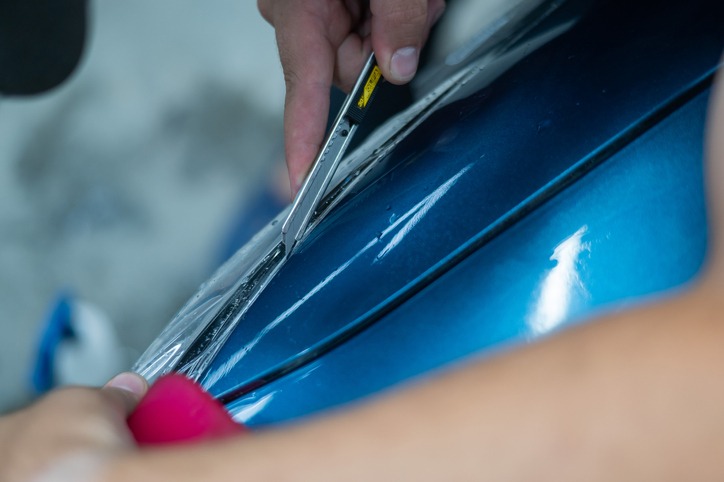If you’re a car enthusiast or simply want to keep your vehicle looking new, you’ve probably heard of both paint protection film and traditional waxing. While both methods aim to protect your car’s paint from damage, they work in different ways and offer varying levels of protection. In this blog post, we’ll explore the differences between paint protection film and traditional waxing, and which one is better for your car.
What is Paint Protection Film?
Paint protection film, also known as PPF, is a clear, thermoplastic urethane film that is applied to the painted surfaces of a vehicle. It’s designed to protect the paint from scratches, chips, and other types of damage that can occur during normal driving. The film is typically self-healing, which means that minor scratches will disappear over time as the film re-forms its protective surface.
Pros and Cons of Paint Protection Film
Pros:
- Provides long-lasting protection against scratches, chips, and other types of damage
- Self-healing properties can reduce the need for maintenance and repair
- Clear film is virtually invisible, so it won’t change the appearance of your car
- Protects against damage from UV rays, bird droppings, and other environmental factors
Cons:
- More expensive than traditional waxing
- Requires professional installation
- Can be difficult to remove without damaging the paint
What is Traditional Waxing?
Traditional waxing involves applying a layer of wax or sealant to the painted surfaces of a vehicle. The wax or sealant forms a protective barrier that can help prevent damage from UV rays, bird droppings, and other environmental factors. Waxing can also help to enhance the shine and appearance of the paint.
Pros and Cons of Traditional Waxing
Pros:
- Relatively inexpensive compared to paint protection film
- Can be applied at home with minimal equipment
- Enhances the shine and appearance of the paint
- Provides some protection against environmental factors
Cons:
- Requires frequent reapplication to maintain protection
- Offers limited protection against scratches and chips
- Can be time-consuming to apply and remove
- Can leave a residue or buildup if not applied properly
Which One is Better for Your Car?
The answer to this question largely depends on your individual needs and preferences. If you’re looking for long-lasting protection against scratches, chips, and other types of damage, paint protection film is the way to go. However, if you’re on a budget and don’t mind frequent reapplication, traditional waxing may be a better choice.
It’s also worth considering the age and condition of your car. If your car is brand new or in excellent condition, paint protection film may be a worthwhile investment to keep it looking new for as long as possible. However, if your car is older and already has some wear and tear, traditional waxing may be sufficient to protect the paint and enhance its appearance.
PPF Or Wax?
In conclusion, the debate between paint protection film and traditional waxing has been ongoing for many years. While both methods offer protection for a car’s paint job, they have distinct differences that can greatly impact a vehicle’s appearance and longevity.
On the one hand, traditional waxing is a time-honored method of car care that has been used for decades. Waxing provides a layer of protection that can help prevent minor scratches and chips from damaging a car’s paint job. However, traditional waxing is not as durable as paint protection film and must be reapplied regularly to maintain its protective properties. Additionally, waxing can be time-consuming and requires a certain level of skill to apply correctly.
On the other hand, paint protection film offers a more robust and long-lasting form of protection. Made from a thin, transparent film that is applied directly to a car’s paint job, this material can help prevent scratches, chips, and other types of damage from occurring. Paint protection film is also easier to apply than traditional waxing and requires little to no skill to install. However, it can be more expensive than waxing and may not be suitable for every vehicle owner.
Ultimately, the choice between paint protection film and traditional waxing comes down to personal preference and the needs of the vehicle owner. If someone is looking for a quick and easy way to protect their car’s paint job, traditional waxing may be the best option. However, if they want a more robust and long-lasting solution, paint protection film may be the way to go. Whatever the choice, it is essential to keep a car’s paint job in good condition to ensure it retains its value and appearance for years to come.

